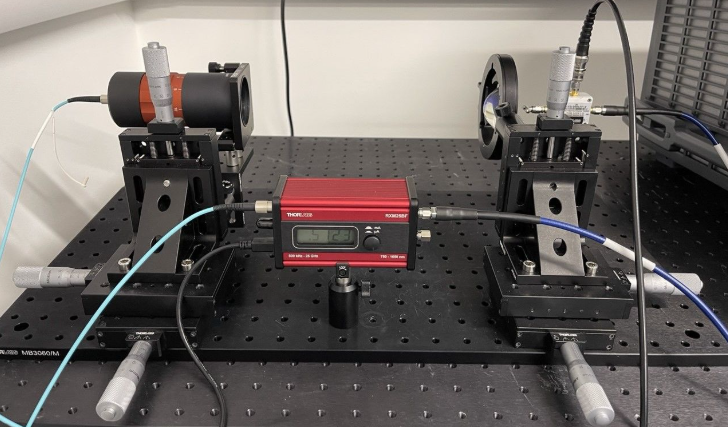Breakthrough in Laser-Based LiFi Technology Achieves Record 70 Gb/s Data Transfer Rate
Image Credit to LiFi Research and Development Centre (LRDC)
The race toward sixth-generation (6G) networks has revealed a critical bottleneck: existing wireless communication technologies struggle to deliver the high-speed, low-latency data transfer required for bandwidth-intensive applications. From virtual and augmented reality to 8K video streaming, holographic displays, and data centre inter-rack connections, the demand for greater capacity continues to outpace available solutions.
Traditional light-emitting diode (LED)-based optical wireless communication (OWC) systems face significant bandwidth limitations that prevent them from meeting these escalating requirements. However, a groundbreaking collaboration between researchers at the LiFi Research and Development Centre (LRDC) and VI Systems GmbH has demonstrated a promising path forward.
Laser-Based LiFi: A Game-Changing Alternative
The research team has successfully developed and tested a next-generation light fidelity (LiFi) system that leverages laser-based OWC technology to dramatically expand bandwidth capacity. Their innovative approach centres on vertical cavity surface emitting lasers (VCSELs), which offer several compelling advantages for optical wireless communication:
Low milliwatt power consumption
Support for wide-range modulation frequencies
Precisely controlled output beam properties
Compatibility with two-dimensional array fabrication
Enhanced reliability and cost-effectiveness
Record-Breaking Performance
The team's experimental proof-of-concept achieved remarkable results. Using a 940 nm single-mode VCSEL operating at an average optical power of just 5 mW, the system demonstrated a record data rate exceeding 70 Gb/s—a fourfold increase over previous achievements by the same research group.
The VCSEL, designed, manufactured, and packaged by VI Systems, features a unique mini-array structure with a compact footprint that boosts output power while maintaining single-mode emission characteristics. The light beam was coupled into a multi-mode, 25 GHz fibre-coupled receiver using a large-beam fibre collimator to maximise communication bandwidth.
The system employed orthogonal frequency division multiplexing (OFDM) modulation with adaptive bit and power loading, all while maintaining optical transmit power below 5 mW.
Looking Beyond 100 Gb/s
Perhaps most significantly, the research indicates the proposed VCSEL-based OWC system has the potential to reach data rates beyond 100 Gb/s when measurement equipment with adequate analogue bandwidth becomes available.
Technical Publication
The complete findings have been published in the IEEE Optica Journal of Lightwave Technology under the title "Achieving 70 Gb/s Over A VCSEL-Based Optical Wireless Link Using A Multi-Mode Fiber-Coupled Receiver." The paper was co-authored by Hossein Kazemi, Isaac Osahon, and Harald Haas of the LRDC, along with Nikolay Ledentsov Jr., Ilya Titkov, and Nikolay Ledentsov of VI Systems GmbH.
This breakthrough represents a significant step toward enabling the high-capacity, low-latency networks that will define the 6G era, potentially transforming how data-intensive applications perform across industries ranging from entertainment to enterprise computing.

